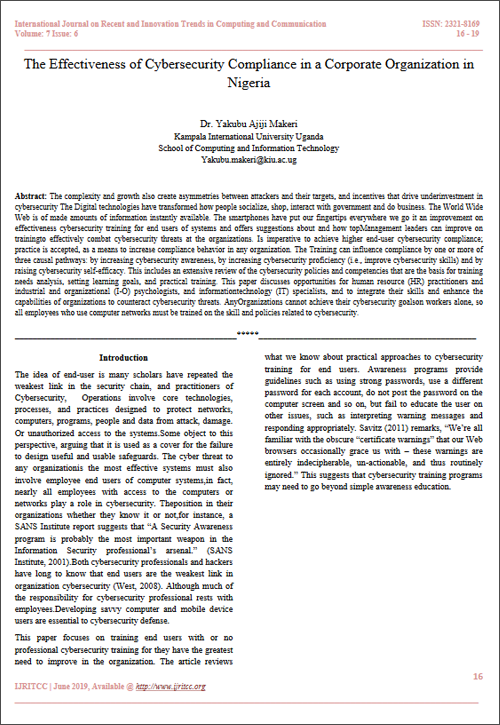The Effectiveness of Cybersecurity Compliance in a Corporate Organization in Nigeria
Main Article Content
Abstract
The complexity and growth also create asymmetries between attackers and their targets, and incentives that drive underinvestment in cybersecurity The Digital technologies have transformed how people socialize, shop, interact with government and do business. The World Wide Web is of made amounts of information instantly available. The smartphones have put our fingertips everywhere we go it an improvement on effectiveness cybersecurity training for end users of systems and offers suggestions about and how topManagement leaders can improve on trainingto effectively combat cybersecurity threats at the organizations. Is imperative to achieve higher end-user cybersecurity compliance; practice is accepted, as a means to increase compliance behavior in any organization. The Training can influence compliance by one or more of three causal pathways: by increasing cybersecurity awareness, by increasing cybersecurity proficiency (i.e., improve cybersecurity skills) and by raising cybersecurity self-efficacy. This includes an extensive review of the cybersecurity policies and competencies that are the basis for training needs analysis, setting learning goals, and practical training. This paper discusses opportunities for human resource (HR) practitioners and industrial and organizational (I-O) psychologists, and informationtechnology (IT) specialists, and to integrate their skills and enhance the capabilities of organizations to counteract cybersecurity threats. AnyOrganizations cannot achieve their cybersecurity goalson workers alone, so all employees who use computer networks must be trained on the skill and policies related to cybersecurity.

